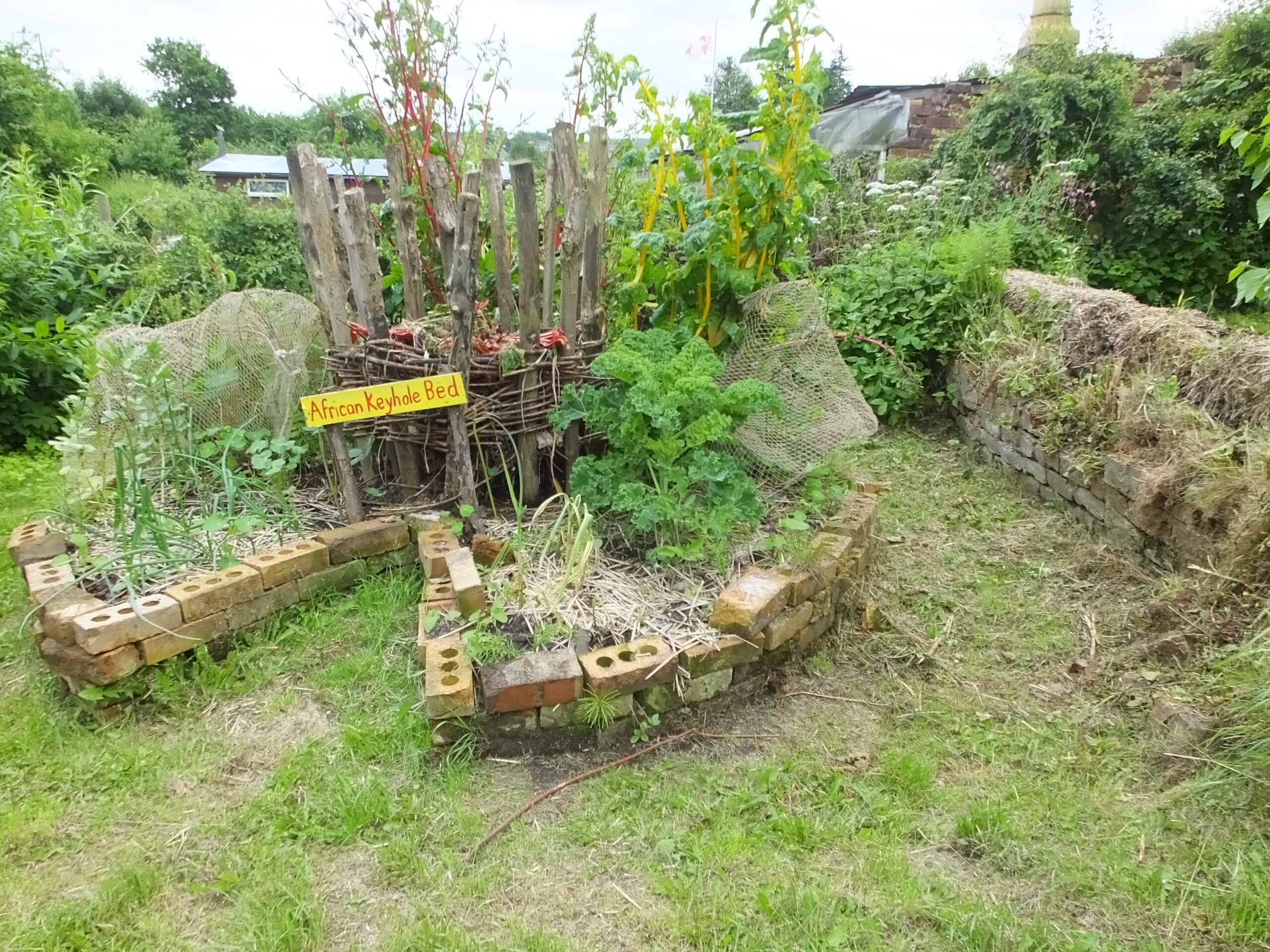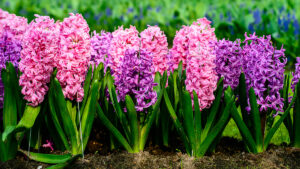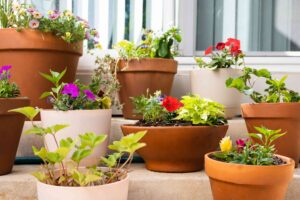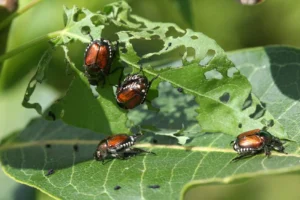Unlock the Magic of Keyhole Gardens: The Ultimate Space-Saving Growing Solution
A lush, productive garden doesn’t require sprawling acreage or perfect growing conditions. Enter the keyhole garden: an ingenious, sustainable growing solution that maximizes space while minimizing effort. This circular raised bed with its distinctive keyhole-shaped cutout combines centuries of traditional wisdom with modern permaculture principles to create one of the most efficient growing systems available to today’s gardeners.
In regions where water is scarce and soil conditions challenging, keyhole gardens have emerged as a revolutionary solution for growing nutritious food. These ingenious raised beds, with their distinctive “keyhole” shape, combine the principles of water conservation, composting, and accessibility into one highly productive growing system. Whether you’re a seasoned gardener or a complete novice, a keyhole garden offers the perfect blend of sustainability and productivity.
The Ingenious Origins of Keyhole Gardens
Keyhole gardens originated in Lesotho, a small nation in southern Africa, where they were developed by the Consortium for Southern Africa Food Security Emergency (C-SAFE) in the 1990s. During this period, Lesotho had one of the highest HIV/AIDS rates globally, and these gardens were specifically designed to allow sick or weakened residents to continue growing their own food despite physical limitations.
The design proved so successful that they helped build over 20,000 keyhole gardens, and when they returned years later, more than 90% were still in use. Today, keyhole gardens can be found throughout Africa, including Ethiopia, Rwanda, Kenya, Sudan, and Nigeria, and have gained popularity in places like Texas and other parts of the United States.
What made these gardens revolutionary was their thoughtful design. They’re “specifically-designed raised beds that recycle old materials, can create nutrient-rich soil, and, most importantly, are entirely accessible, even if an individual is restricted in some of their physical abilities.” The raised height and unique shape allow gardeners to tend to plants without bending or kneeling, making them perfect for anyone with mobility issues.
Understanding Keyhole Garden Design
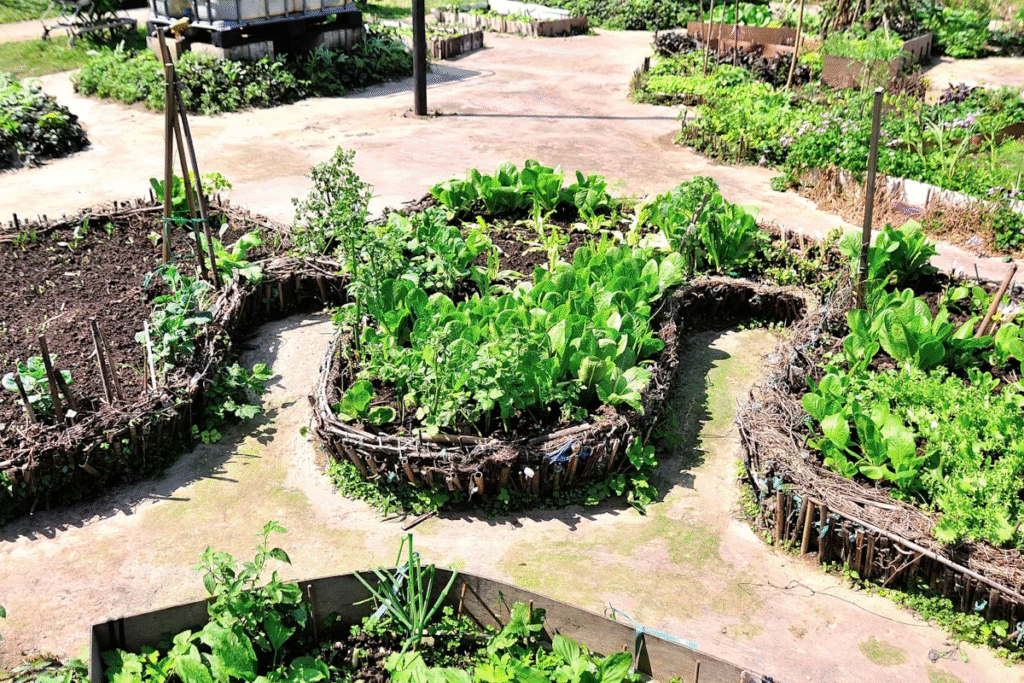
The Basic Structure
A keyhole garden gets its name from its distinctive shape, which resembles an old-fashioned keyhole when viewed from above. The standard design consists of:
- Circular Raised Bed: A two-meter-wide (approximately 6-foot) circular raised garden with walls typically made of stone, though various materials can be used.
- Keyhole-Shaped Cutout: A wedge-shaped indentation or cutout along one side, typically about 24 inches wide at the perimeter that narrows slightly as it reaches the center. This allows easy access to the center without stepping on the growing area.
- Central Compost Basket: A composting basket that sits in the center of the bed, usually about 12-18 inches in diameter, made from materials like chicken wire, hardware cloth, or even bamboo stakes arranged in a cylinder. This is where kitchen scraps, yard waste, and gray water are added throughout the growing season.
- Sloped Soil Profile: The soil is mounded higher near the center basket and slopes gently down to the sides, allowing nutrients from the compost to flow outward.
Standard Dimensions
While keyhole gardens can be customized to fit your space and needs, there are some standard measurements that work well for most gardeners:
- Diameter: Most keyhole gardens range from 6 to 8 feet in diameter. The Texas Master Gardeners Association has standardized on a 6-foot-wide bed for their designs. This size allows gardeners to easily reach all areas of the bed without stepping on the soil.
- Height: The height typically ranges from 2 to 3 feet, though this is largely a matter of personal preference. Taller beds reduce the need to bend but require sturdier construction and more fill material.
- Compost Basket: Usually about 12-18 inches wide and should rise at least 1 foot above the height of the bed walls. The Texas design uses a 12-inch tube made of rabbit fencing or chicken wire.
- Keyhole Path: The access path is typically 24 inches wide at the outer edge, narrowing slightly as it approaches the center compost basket.
Material Options
One of the beautiful aspects of keyhole gardens is their adaptability to locally available materials. Here are some common options for each component:
For the Outer Walls:
- Stones or rocks
- Bricks or cinder blocks
- Reclaimed lumber or fence boards
- Straw bales
- Glass bottles set in mortar
- Wattle (woven sticks)
- Corrugated metal
For the Compost Basket:
- Chicken wire
- Hardware cloth
- Woven sticks
- Bamboo stakes
- Metal fencing material
For the Base Layers: Where keyhole gardens are common, “cans, rocks, clay pots, branches and all sorts of debris may be tossed in first to fill space, followed by layers of soil, plant matter, wood ash, manure and other biodegradable materials that will become rich compost over time.”
How to Build Your Own Keyhole Garden
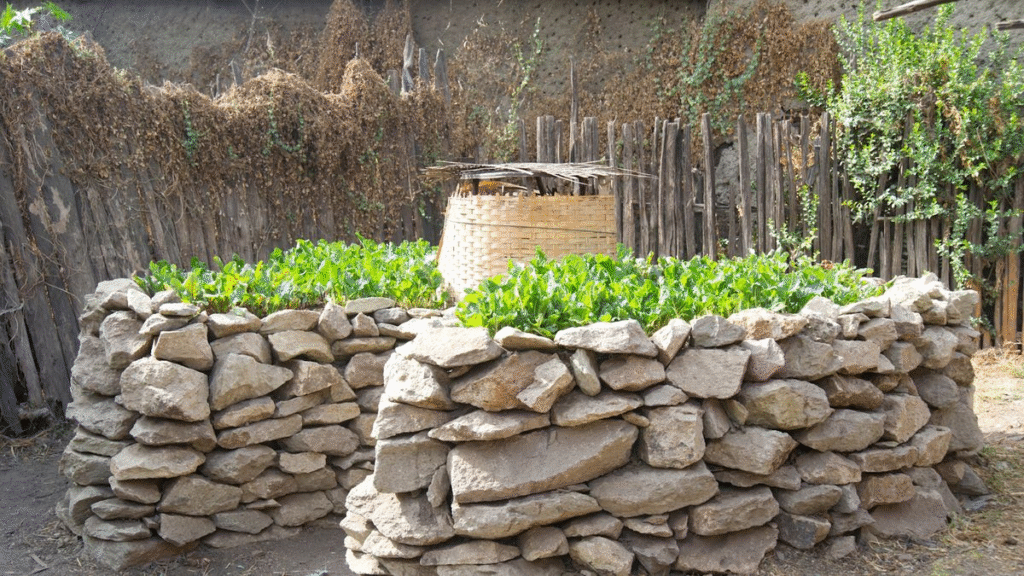
Step-by-Step Construction Process
1. Site Selection and Preparation
Choose a location that receives at least 6 hours of direct sunlight daily during your growing season. Ensure there’s adequate space around the outside of the bed for access, and avoid areas near large trees whose roots might compete for water and nutrients. Consider proximity to your kitchen for easy access to the compost basket.
Level the ground where the garden will be placed, but extensive tilling isn’t necessary. If building on a slope, consider orienting the keyhole access point downhill for easier entry.
2. Marking the Shape
To mark the circle, use a three-foot length of string. Attach one end to a stake in the center of your planned garden, and with the string pulled taut, walk in a circle marking the ground as you go. Then, decide where you want your garden’s “keyhole” and mark a space that is roughly 3x2x1 feet.
3. Building the Walls
Start by constructing the outer walls of your garden with your chosen materials. If using stones, place the largest ones on the bottom and smaller rocks on top. Walls can be as short as 10 inches, but taller walls will be easier on your back.
For wood construction, ensure pieces are securely fastened together to withstand the pressure of soil and water. If using cinder blocks or bricks, consider adding rebar through some of the holes for additional stability.
4. Creating the Compost Basket
It’s easier to build the center composting basket before the outer wall gets too high. The sides of the 18-inch-wide center basket should be porous so water and nutrients can flow into the garden. Secure it in place with stakes driven into the ground.
Consider building in a removable block or panel at the bottom of the composting basket so you can scoop out finished compost during the growing season.
5. Layering the Base and Soil
The base of your keyhole garden should consist of layers of biodegradable materials that will break down over time to nourish your plants:
- Bottom Layer: Start with bulky items like logs, branches, or large pieces of cardboard to provide drainage.
- Middle Layers: Add alternating layers of browns (dry leaves, straw, cardboard) and greens (grass clippings, kitchen scraps, manure).
- Top Layers: The top 18 inches should be filled with a good quality soil/compost mixture for planting.
Slope the soil down from the compost basket to help nutrients flow throughout the garden bed. The soil level at the outer wall should be a couple of inches lower than around the compost basket.
6. Finishing Touches
Consider placing pavers, blocks, gravel, or mulch in the keyhole path to prevent it from becoming muddy when you access the compost basket.
Add a final layer of mulch (straw, leaves, or wood chips) to the soil surface to help retain moisture and suppress weeds.
Maintenance Tips
- Composting: Kitchen waste, grass clippings, and other compostable materials should be layered in the central composting basket. Over time, these materials break down, creating compost tea that enriches the surrounding soil.
- Watering: It’s common practice to water the keyhole garden via the central basket. This helps flush nutrients out into the surrounding soil and waters the garden steadily from below the roots rather than watering the topsoil where moisture might be lost to evaporation.
- Soil Replenishment: As the organic matter decomposes, the soil level will drop. Add more compost to the top layer periodically to maintain fertility.
- Seasonal Care: Keyhole gardens can keep producing throughout multiple seasons and conditions, and as few as three beds can supply a large family with vegetables year-round. Adjust plantings according to the season and your climate zone.
Optimal Plant Selection and Layout for Keyhole Gardens
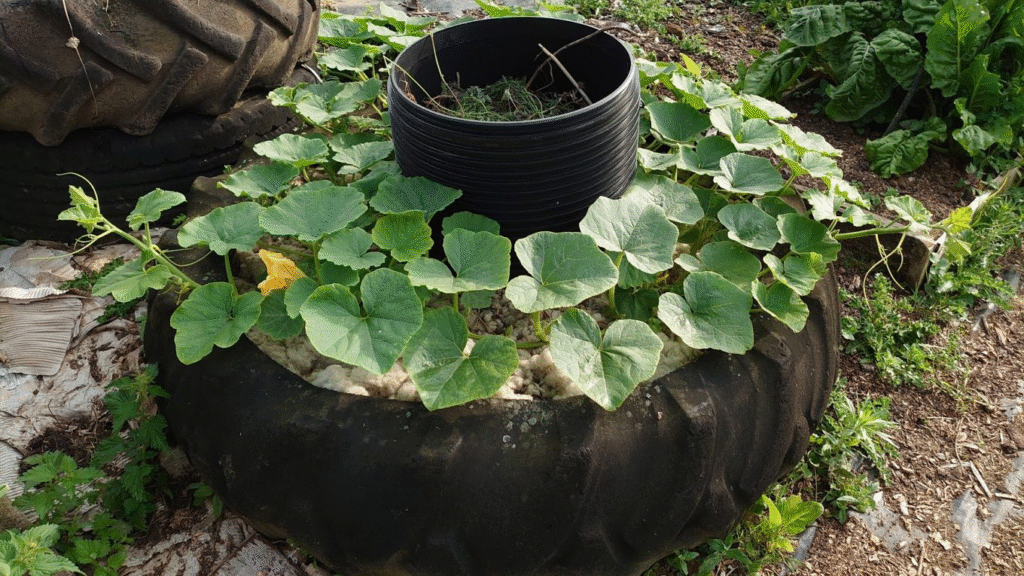
Best Plants for Keyhole Gardens
What you choose to plant depends on what your family likes to eat and what grows well in your climate. Good choices include lettuce, strawberries, tomatoes, carrots, kale, onions, spinach, herbs, and other vegetables.
In Africa, keyhole gardens are positioned close to the kitchen and used to raise leafy greens such as lettuce, kale, and spinach; herbs; and root crops such as onions, garlic, carrots, and beets. These remain excellent choices for any keyhole garden.
Some considerations when selecting plants:
- Root Depth: Opt for crops that don’t have very deep roots, especially for shorter keyhole gardens.
- Plant Height: Large indeterminate tomatoes or pole beans can reach too high to harvest if planted in a taller raised bed. Choose compact or dwarf varieties when possible.
- Climbing Plants: Cucumbers, pole beans, and other climbing plants might need support. Feel free to use leftover pieces of fencing, trellises, or stakes and string.
- Avoid Sprawling Plants: Plants with wide-reaching root systems, such as tomatoes and zucchini, may not perform well in a keyhole garden. If you do plant these, give them adequate space or allow them to spill over the sides.
Strategic Plant Layout
It can be useful to approach your keyhole bed as a zone-system in miniature, with each bed being comprised of three concentric circles or rows:
- Inner Circle (closest to the compost basket): Place the fastest growing vegetables like lettuces, salad greens, and herbs in the first circle around the pathway, closest to the center. These will benefit most from the constant nutrients and moisture from the compost basket.
- Middle Circle: The next circle out should contain slower growing plants like tomatoes, peppers, peas, chard, and kale, placed a bit further back from the inner-section.
- Outer Circle: The furthest zone should have plants that will be harvested least often, like root vegetables (carrots, beets, parsnips, onions) and brassicas (cauliflower, broccoli, Brussels sprouts), placed along the farthest edge.
Microclimates Within Your Keyhole Garden
Within your keyhole bed, there will be different microclimates. The areas closest to the compost pile might be a little more fertile and will definitely have access to more water. The outside edges – especially the side facing the sun – will be drier.
Take advantage of these natural variations:
- Plant moisture-loving herbs and vegetables near the central basket.
- Place drought-tolerant plants like Mediterranean herbs (rosemary, thyme, sage) along the outer edges, especially on the side that receives the most sun.
- Tall plants can provide shade for other plants that prefer cooler temperatures.
Companion Planting Considerations
You can also plant the beds using guilds. This can be used to generate different micro-climates in the garden, or combine species that benefit one another through their proximity by providing shade, fixing nitrogen, repelling pests, or attracting beneficial insects.
Some classic companion planting combinations for keyhole gardens include:
- Carrots, onions, and lettuce
- Tomatoes, basil, and marigolds
- Beans, corn, and squash (the traditional “Three Sisters” planting)
- Kale, dill, and nasturtiums
Benefits of Keyhole Gardens for Different Climates
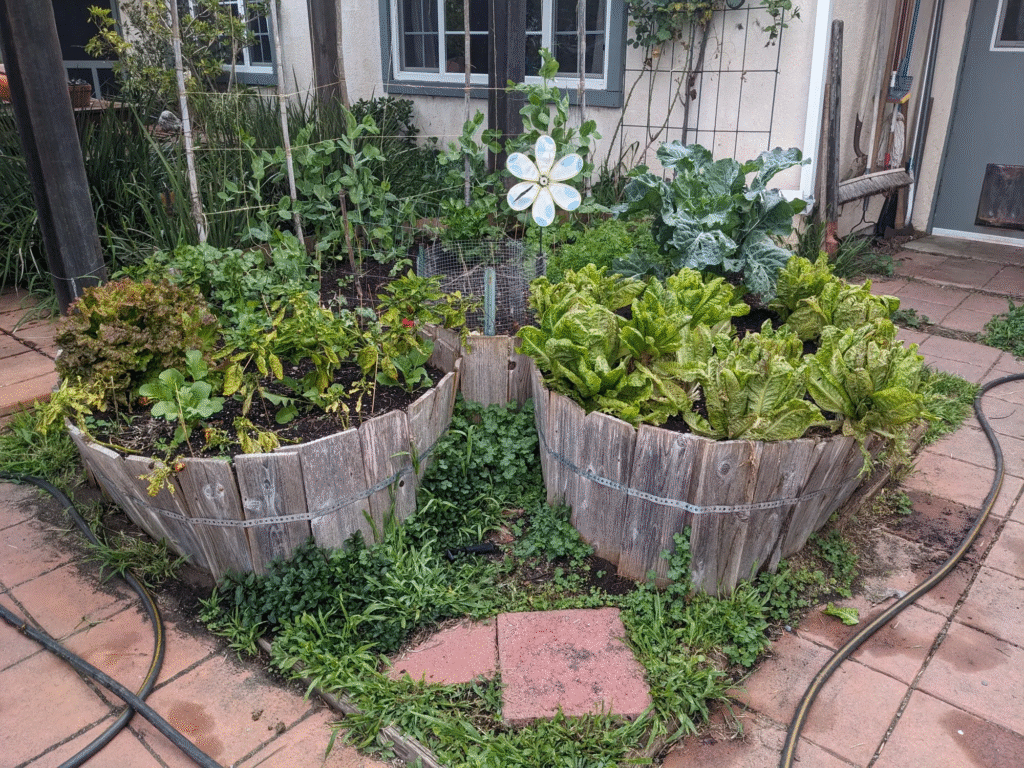
Adaptability to Various Environments
Keyhole gardens can keep producing throughout multiple seasons and conditions, protecting plants against the harsh climatic conditions of hot, dry, and cold environments, making them perfect for anyone who wants to grow productive, organic plants in any climate.
Benefits for Dry Climates
In arid regions, keyhole gardens offer several specific advantages:
- Water Conservation: The keyhole garden will need watering less than a conventional one. The layers of organic material under the topsoil create a healthy soil structure that effectively absorbs and retains moisture.
- Reduced Evaporation: A surrounding border of materials like blocks or bricks can absorb heat and reduce evaporation. The central irrigation system delivers water directly to plant roots rather than the surface.
- Greywater Utilization: Clean water can be used when watering plants on the surface, while household greywater (water used for laundry, dishwashing, etc.) can be poured down into the compost basket, further conserving precious water resources.
Benefits for Cold Climates
Though originally designed for hot, arid environments, keyhole gardens also offer advantages in cooler regions:
- Thermal Mass: Working with timber and stones to build walls for raised beds or keyhole gardens provides thermal mass, which is quite a benefit in temperate climates.
- Extended Growing Season: The mound absorbs and stores passive solar energy. Combined with an internal compost bin that generates its own heat, heat-loving plants can be grown with less direct sunlight, helping to extend the growing season.
- Frost Protection: The raised design keeps plants elevated above ground-level frosts, while the stone or masonry walls can absorb heat during the day and release it at night.
Urban and Small Space Benefits
For urban gardeners or those with limited space:
- Compact Productivity: Keyhole gardens offer good production in little space, which is a plus for those with small yards or limited sunny areas.
- Aesthetics: They provide an aesthetically pleasing way to add edible gardens to a landscape.
- Waste Reduction: The built-in composting system reduces household waste by turning kitchen scraps into garden nutrients.
The Sustainable Impact of Keyhole Gardens
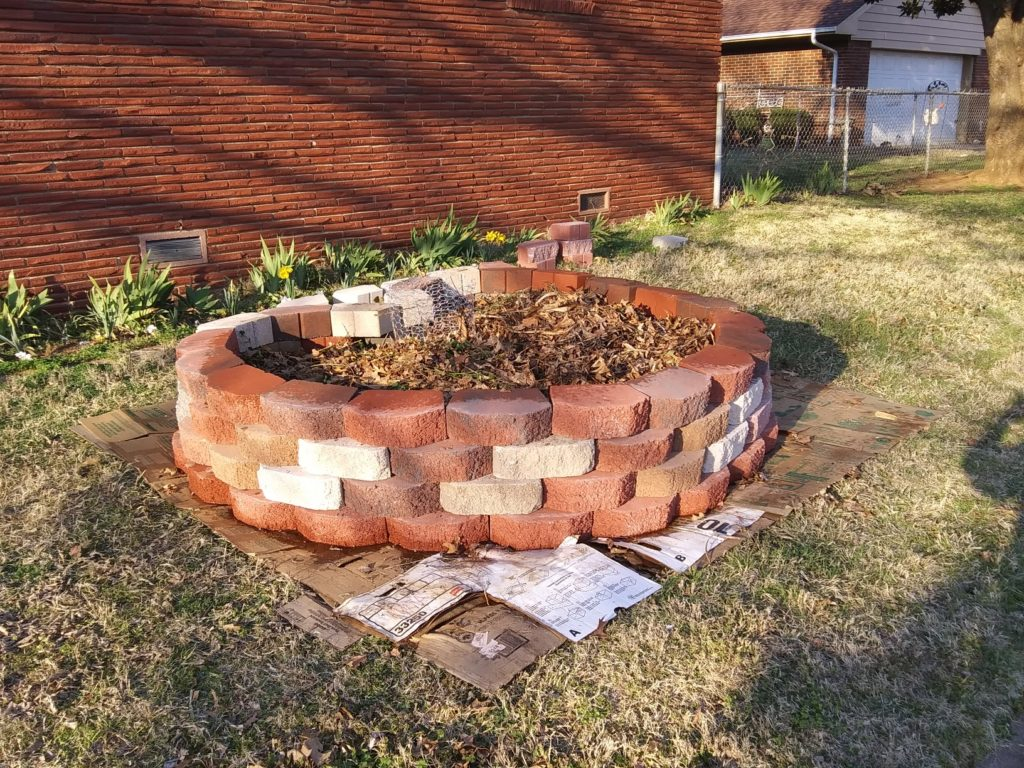
Environmental Benefits
Keyhole gardens are one of several creative adaptations being used to counteract climate change and improve environmental sustainability. They achieve this through:
- Water Conservation: Their design minimizes water usage through efficient irrigation and moisture retention.
- Waste Reduction: Kitchen scraps and yard waste that might otherwise end up in landfills are recycled directly into the garden.
- Reduced Carbon Footprint: Growing food at home reduces transportation emissions associated with store-bought produce.
- Soil Health: The continuous addition of organic matter builds rich, living soil rather than depleting it.
Social Impact
The keyhole garden’s accessibility makes it a whole lot more accessible to the elderly and children or those with mobility challenges to plant, tend, and harvest in their own gardens. This inclusivity has made keyhole gardens valuable tools for:
- Community gardens and school projects
- Therapeutic gardening programs
- Food security initiatives in developing regions
- Urban renewal efforts in food deserts
Economic Advantages
Beyond environmental and social benefits, keyhole gardens offer economic advantages:
- Reduced grocery bills through home food production
- Minimal need for purchased fertilizers or soil amendments
- Lower water bills due to efficient water usage
- Potential for growing high-value crops in small spaces
Creative Design Variations
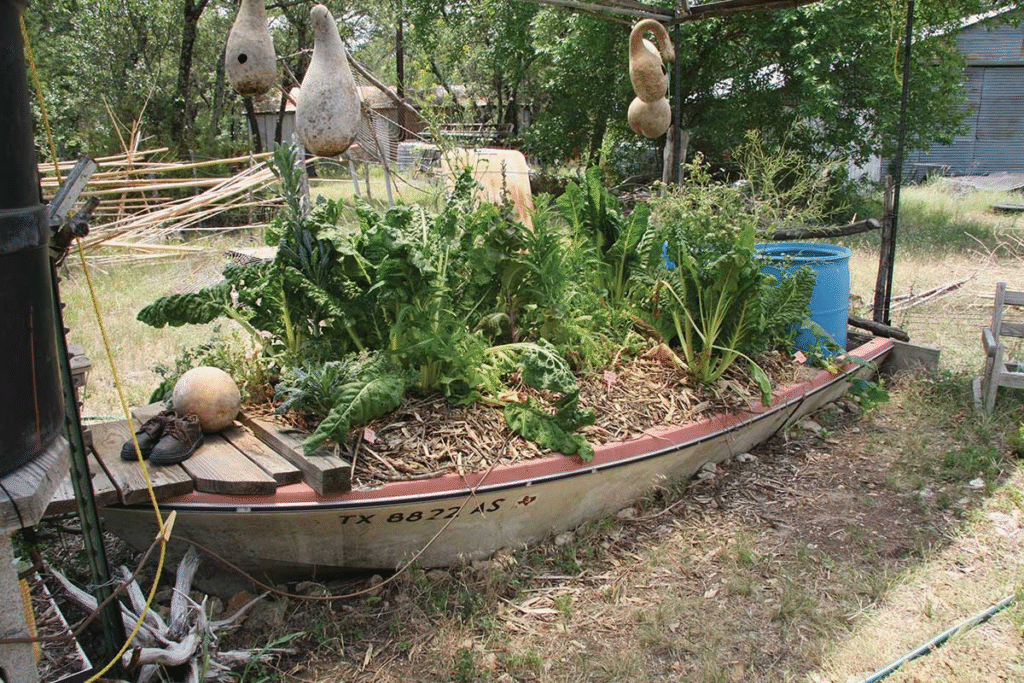
Alternative Shapes and Configurations
While the traditional keyhole garden is circular with a single keyhole cutout, many creative variations exist:
- Square or Rectangular: Easier to construct with lumber but still incorporating the keyhole access point and central compost basket.
- Interconnected Keyholes: If you have room to string a few keyhole gardens together, you can really maximize production. Some gardeners create a mandala pattern with multiple keyhole gardens arranged in a circular formation.
- Double-Sided Design: A longer bed with keyhole access points on both sides, creating a dumbbell shape.
- Spiral Extensions: Combining the keyhole concept with herb spiral designs for an attractive and functional garden feature.
Decorative Elements
Beyond functionality, your keyhole garden can become a beautiful focal point in your landscape with these creative touches:
- Topping the walls with decorative capstones or tiles
- Incorporating mosaic designs into the walls if using mortar
- Adding artistic elements like colorful glass bottles in the construction
- Surrounding the garden with complementary flowers and ornamental grasses
- Installing solar-powered lighting along the path or walls
Integration with Other Garden Systems
For maximum sustainability, consider integrating your keyhole garden with other systems:
- Rainwater Harvesting: Position the garden to capture runoff from a roof or connect it to a rain barrel system.
- Hugelkultur Elements: Some gardeners combine keyhole design with hugelkultur techniques, using buried logs and woody debris as the base layer for long-term nutrient release and moisture retention.
- Trellising Systems: Add vertical growing spaces with arches or trellises over the keyhole path.
- Worm Composting: In Texas, it’s common to add red-wiggler worms to the compost basket to help break down organic matter more efficiently.
Conclusion: Your Path to Keyhole Garden Success
The keyhole garden represents one of the most elegant solutions in sustainable gardening—combining ancient wisdom with modern ecological understanding. Whether you’re dealing with poor soil, limited space, physical limitations, or simply want a more sustainable way to grow food, this ingenious design offers compelling benefits.
As climate challenges intensify around the world, keyhole gardens stand as a testament to human ingenuity and adaptation. They remind us that sometimes the most effective solutions are not high-tech, but simply thoughtfully designed. By building your own keyhole garden, you’re not just creating a space to grow food—you’re participating in a global movement toward more resilient, accessible, and sustainable food systems.
Take inspiration from the worldwide keyhole gardening community, experiment with your own variations, and enjoy the satisfaction of harvesting abundant produce from your own beautifully designed, low-maintenance keyhole garden. As the ancient African proverb suggests, “If you want to go fast, go alone. If you want to go far, go together.” The keyhole garden embodies this wisdom, bringing together composting, water conservation, and ergonomic design to create a system that is truly greater than the sum of its parts.
